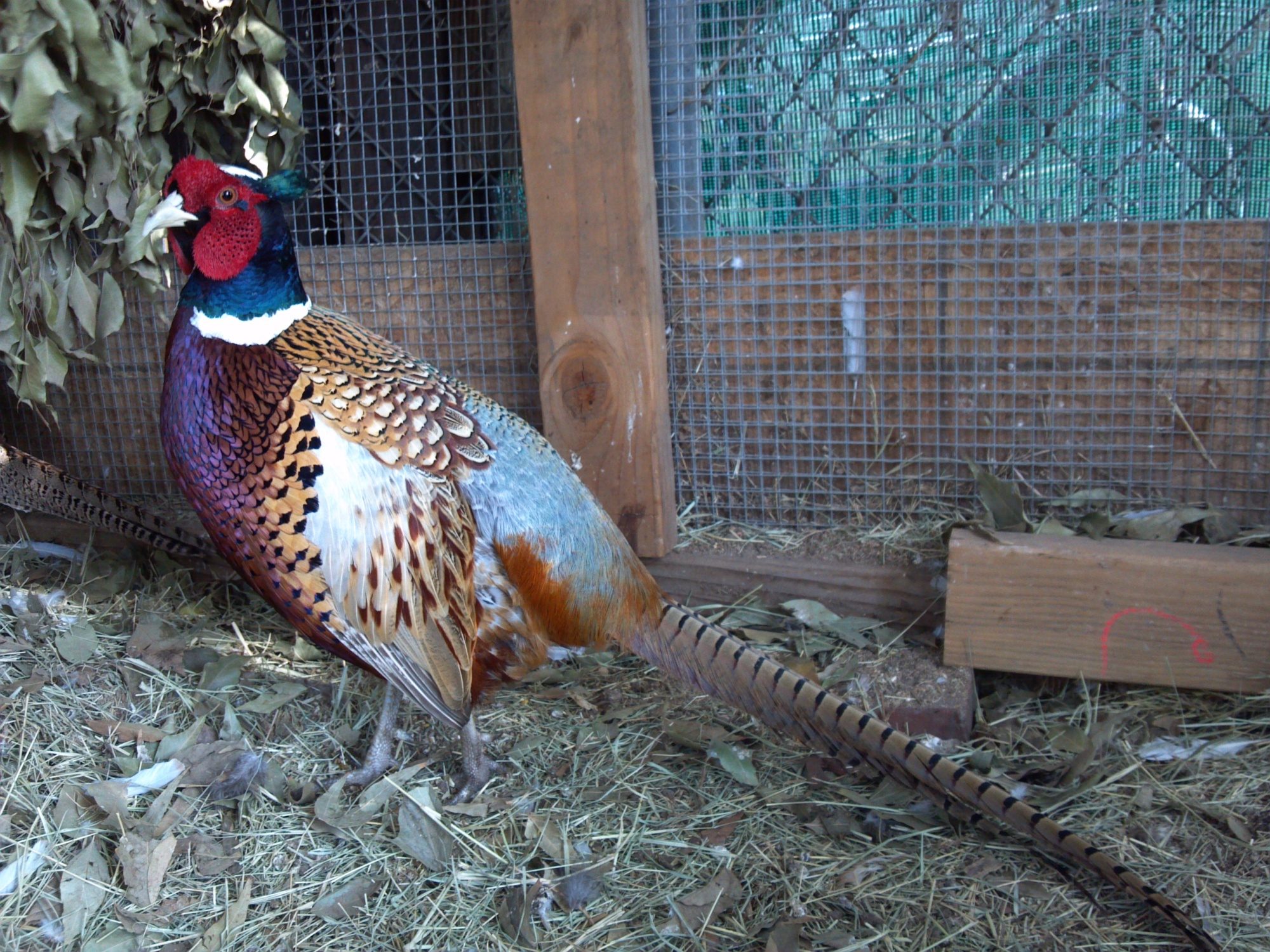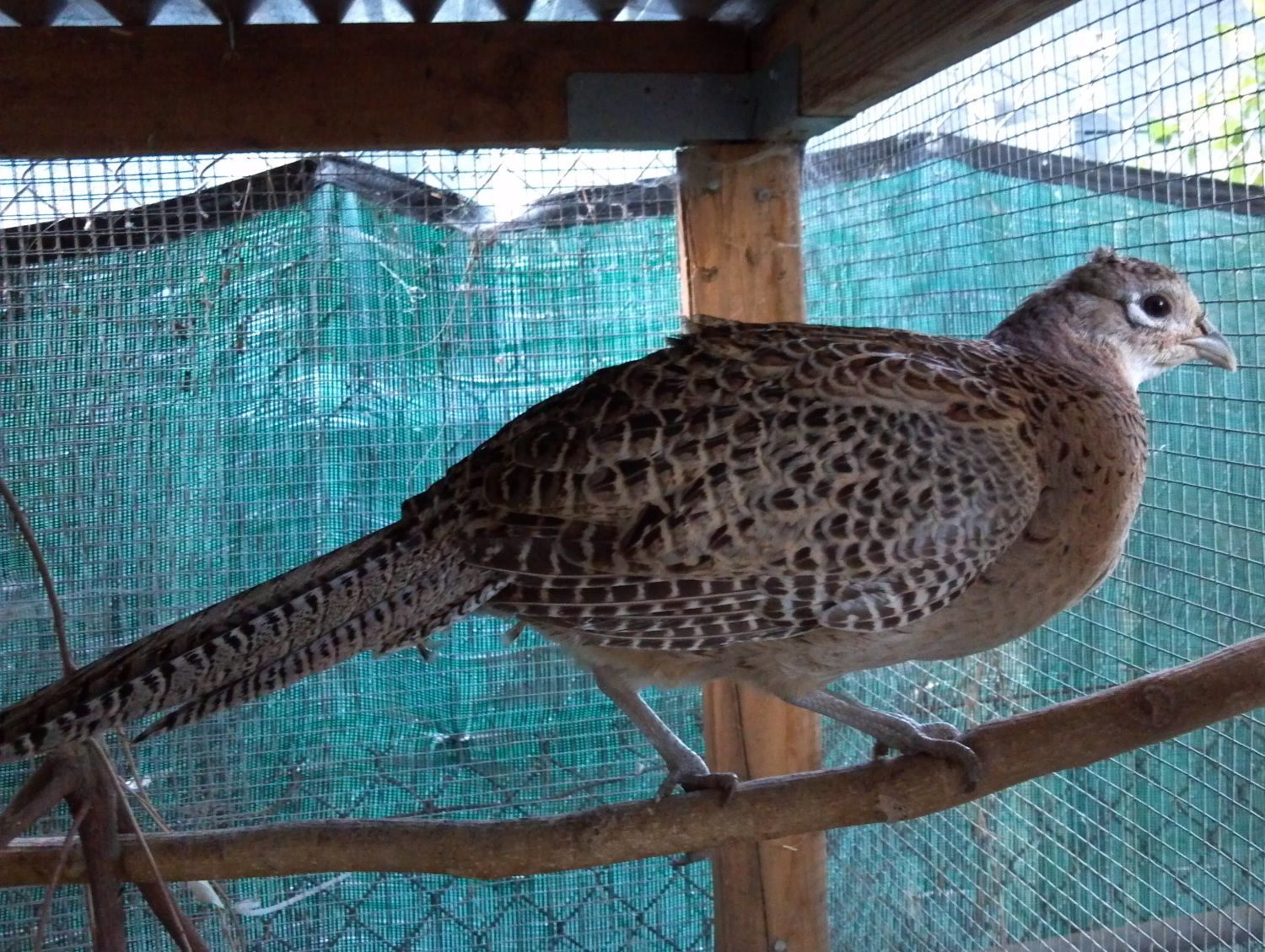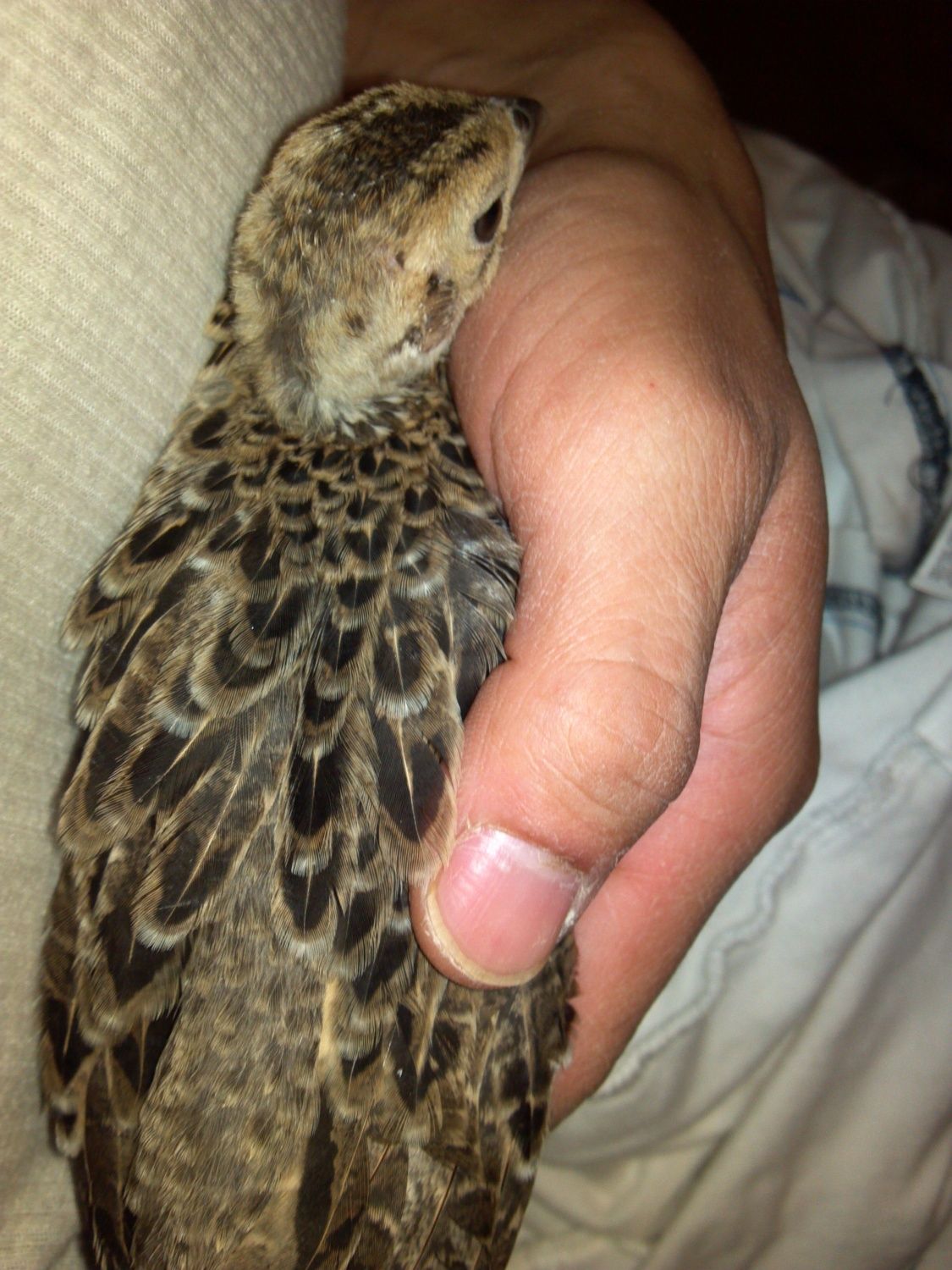Navigation
Install the app
How to install the app on iOS
Follow along with the video below to see how to install our site as a web app on your home screen.
Note: This feature may not be available in some browsers.
More options
You are using an out of date browser. It may not display this or other websites correctly.
You should upgrade or use an alternative browser.
You should upgrade or use an alternative browser.
Pheasants and chickens together?
- Thread starter Cara
- Start date
I'm not trying to stir the pot, but I am in a similar predicament with having an orphan pheasant chick and only chickens in my coops. She is so sweet and I just love that tittle thing but I am really afraid that she won't be able to get along with chickens. So will I eventually have to re home her?
I have scoured the web and can't find any information about chickens making pheasants sick from disease. I'm really confused.
I have scoured the web and can't find any information about chickens making pheasants sick from disease. I'm really confused.
I got "Lola" when she was 4wks old and immediately put her with my then young Silkies. She was about 4 months when I acquiered "Rico and put them on a separate pen. While she was with the chickens, Lola was very tame and friendly, soon after Rico came in the picture, she became very skittish down to the point of making it unplesant to enter the coop. The moment she sees me opening the door she runs all over the place, it's a mad house. Rico on the other hand, was 6 months when he joined Lola. He has become the sweetest, tame and the most relax bird I have ever seen. I walked in the coop and all he does is this...

And Lola does this...

The two chicks stay with my now 3mth Silkies and sleep in the middle of the bunch...as a matter of fact the Silkies act more scarred of them than the other way around.

And Lola does this...

The two chicks stay with my now 3mth Silkies and sleep in the middle of the bunch...as a matter of fact the Silkies act more scarred of them than the other way around.
You won't find anything (from a reliable source) about pheasants having a problem with chickens or chicken droppings. Peacocks and turkeys are the ones who can't cohabit with chickens or where chickens have lived until they are at least four months old. Even then it's not a good idea for turkeys.
Turkey and peacocks are highly susceptable to "blackhead"
Blackhead disease, or more correctly, histomoniasis, is primarily a disease of young turkeys. Chickens are more resistant to the effects of the infection but may act as carriers of the disease-causing organism. Histomoniasis is caused by a microscopic protozoan called Histomonas Meleagridis. The name blackhead is a poor descriptive term because the heads of the birds infected with this parasite are not dark. The protozoan causes considerable damage to the liver and ceca of infected turkeys, and the untreated birds usually die.
Since turkeys and peacocks are almost identical physiologically they are both susceptable to blackhead. The very few vets around who treat peacocks know that a peacock receives the same treatments as turkeys.
But histamonas generally pass through pheasants and chickens causing no ill effects, but they contaminate the ground with their droppings and the histomonas live in earthworms and the cecal worms can live in the ground for up to three years.
You can't put a pheasant chick in with adult chickens and be safe. If you had a chicken with baby chicks you could have done it the first day if the pheasant was only a day or two old. I have done that with no problems.
Your best bet is to hand raise it..
Turkey and peacocks are highly susceptable to "blackhead"
Blackhead disease, or more correctly, histomoniasis, is primarily a disease of young turkeys. Chickens are more resistant to the effects of the infection but may act as carriers of the disease-causing organism. Histomoniasis is caused by a microscopic protozoan called Histomonas Meleagridis. The name blackhead is a poor descriptive term because the heads of the birds infected with this parasite are not dark. The protozoan causes considerable damage to the liver and ceca of infected turkeys, and the untreated birds usually die.
Since turkeys and peacocks are almost identical physiologically they are both susceptable to blackhead. The very few vets around who treat peacocks know that a peacock receives the same treatments as turkeys.
But histamonas generally pass through pheasants and chickens causing no ill effects, but they contaminate the ground with their droppings and the histomonas live in earthworms and the cecal worms can live in the ground for up to three years.
You can't put a pheasant chick in with adult chickens and be safe. If you had a chicken with baby chicks you could have done it the first day if the pheasant was only a day or two old. I have done that with no problems.
Your best bet is to hand raise it..
Coryza(dunno if I spelled that right or not) is what is the problem with chickens and any gamebirds(pheasants, quail etc). Chickens can carry it without being affected(so you cannot even tell if they got it or not) while gamebirds get very sick and die 90% of the time and any survivours are carriers.
It also stays in the soil for a long time. I have 3 enclosures I cannot use for anything that are the remants of the previous owner who first kept hawks and eagles in them and then chickens, I have tried putting pheasants, partridges and quail in them because they are actually nice pens and everything gets sick with coryza within 2 weeks of moving in. Any chickens I have kept in them and relocated were carriers and would get my pheasants etc sick within weeks of being in contact(took me 2 yrs to figure out why everything gamebird died when in those enclosures or in contact with chickens that used those enclosures)....
For 4 yrs now I haven't let a bird of any sort near these pens and never had a Coryza issue since.
Anyone know what the livespan is of it in the soil? The Vet couldnt tell me, he just confirmed the diagnosis but didnt really know what to do about it.
It also stays in the soil for a long time. I have 3 enclosures I cannot use for anything that are the remants of the previous owner who first kept hawks and eagles in them and then chickens, I have tried putting pheasants, partridges and quail in them because they are actually nice pens and everything gets sick with coryza within 2 weeks of moving in. Any chickens I have kept in them and relocated were carriers and would get my pheasants etc sick within weeks of being in contact(took me 2 yrs to figure out why everything gamebird died when in those enclosures or in contact with chickens that used those enclosures)....
For 4 yrs now I haven't let a bird of any sort near these pens and never had a Coryza issue since.
Anyone know what the livespan is of it in the soil? The Vet couldnt tell me, he just confirmed the diagnosis but didnt really know what to do about it.
Okay now from the Merck Veterinary Manual (I give the link so you can read it yourself) is the actual facts about Coryza.
Infectious Coryza: Introduction


Etiology
Epidemiology and Transmission
Clinical Findings
Lesions
Diagnosis
Control and Treatment
Infectious coryza is an acute respiratory disease of chickens characterized by nasal discharge, sneezing, and swelling of the face under the eyes. It is distributed worldwide. The disease is seen only in chickens; reports of the disease in quail and pheasants probably describe a similar disease that is caused by a different etiologic agent.
In developed countries such as the USA, the disease is seen primarily in pullets and layers and occasionally in broilers. In the USA, it is most prevalent in commercial flocks in California and the southeast, although northeastern USA has recently experienced significant outbreaks. In developing countries, the disease often is seen in very young chicks, even as young as 3 wk of age. Poor biosecurity, poor environment, and the stress of other diseases are probably the main reasons why infectious coryza is more of a problem in developing countries. The disease has no public health significance.
http://www.merckvetmanual.com/mvm/index.jsp?cfile=htm/bc/206600.htm
This is the premier veterinary manual and the information in it factual
Infectious Coryza: Introduction


Etiology
Epidemiology and Transmission
Clinical Findings
Lesions
Diagnosis
Control and Treatment
Infectious coryza is an acute respiratory disease of chickens characterized by nasal discharge, sneezing, and swelling of the face under the eyes. It is distributed worldwide. The disease is seen only in chickens; reports of the disease in quail and pheasants probably describe a similar disease that is caused by a different etiologic agent.
In developed countries such as the USA, the disease is seen primarily in pullets and layers and occasionally in broilers. In the USA, it is most prevalent in commercial flocks in California and the southeast, although northeastern USA has recently experienced significant outbreaks. In developing countries, the disease often is seen in very young chicks, even as young as 3 wk of age. Poor biosecurity, poor environment, and the stress of other diseases are probably the main reasons why infectious coryza is more of a problem in developing countries. The disease has no public health significance.
http://www.merckvetmanual.com/mvm/index.jsp?cfile=htm/bc/206600.htm
This is the premier veterinary manual and the information in it factual
I am glad somebody knew the answers.I know I didn't know the specifics(being a unreliable source and all).Why can't people just listen to warnings?They are there to help you with your hobby and keep your birds safe and healthy.
In N.H.,Tony.
In N.H.,Tony.
Just look at it this way. When their birds die, you (the unreliable source) can sell them new healthy birds at a higher costI am glad somebody knew the answers.I know I didn't know the specifics(being a unreliable source and all).Why can't people just listen to warnings?They are there to help you with your hobby and keep your birds safe and healthy.
In N.H.,Tony.

Gambit, heres my opinion based on experience.
2 years ago I decided to see for myself what would happen if I raised pheasants and chickens together. I put 10 pheasant chicks in with 10 chicken chicks all 3 days old into a brand new never before used brooder with new feeders and waterers. In 3 months all of the chickens were alive but I only had 2 pheasants left. I had the same results trying this with quail. I do know what to do when it comes to raising gamebirds and have never had this high of a mortality rate when kept separate. Also, gamebirds and chickens do not eat the same feed or require the same care, they don't co-exist in the wild so why would you keep them together in captivity? Think about it, are you doing whats best for the birds or whats convenient for you?
2 years ago I decided to see for myself what would happen if I raised pheasants and chickens together. I put 10 pheasant chicks in with 10 chicken chicks all 3 days old into a brand new never before used brooder with new feeders and waterers. In 3 months all of the chickens were alive but I only had 2 pheasants left. I had the same results trying this with quail. I do know what to do when it comes to raising gamebirds and have never had this high of a mortality rate when kept separate. Also, gamebirds and chickens do not eat the same feed or require the same care, they don't co-exist in the wild so why would you keep them together in captivity? Think about it, are you doing whats best for the birds or whats convenient for you?
I was about to get Chinese golden/ red pheasants but after reading your comments and reading a little bit, I realized that these pheasants can
pick on my ormental ducks such as mandarines/ wood duck and pin tales.
pick on my ormental ducks such as mandarines/ wood duck and pin tales.
New posts New threads Active threads
-
Latest threads
-
-
-
-
Chickens aren’t eating their layer feed
- Started by Shabby Chic-Hens
- Replies: 1
-
-
-
Threads with more replies in the last 15 days
-
-
-
Vent gleet/prolapse/abscess? What am I missing
- Started by FreshObsessed
- Replies: 47
-
-
-
×



